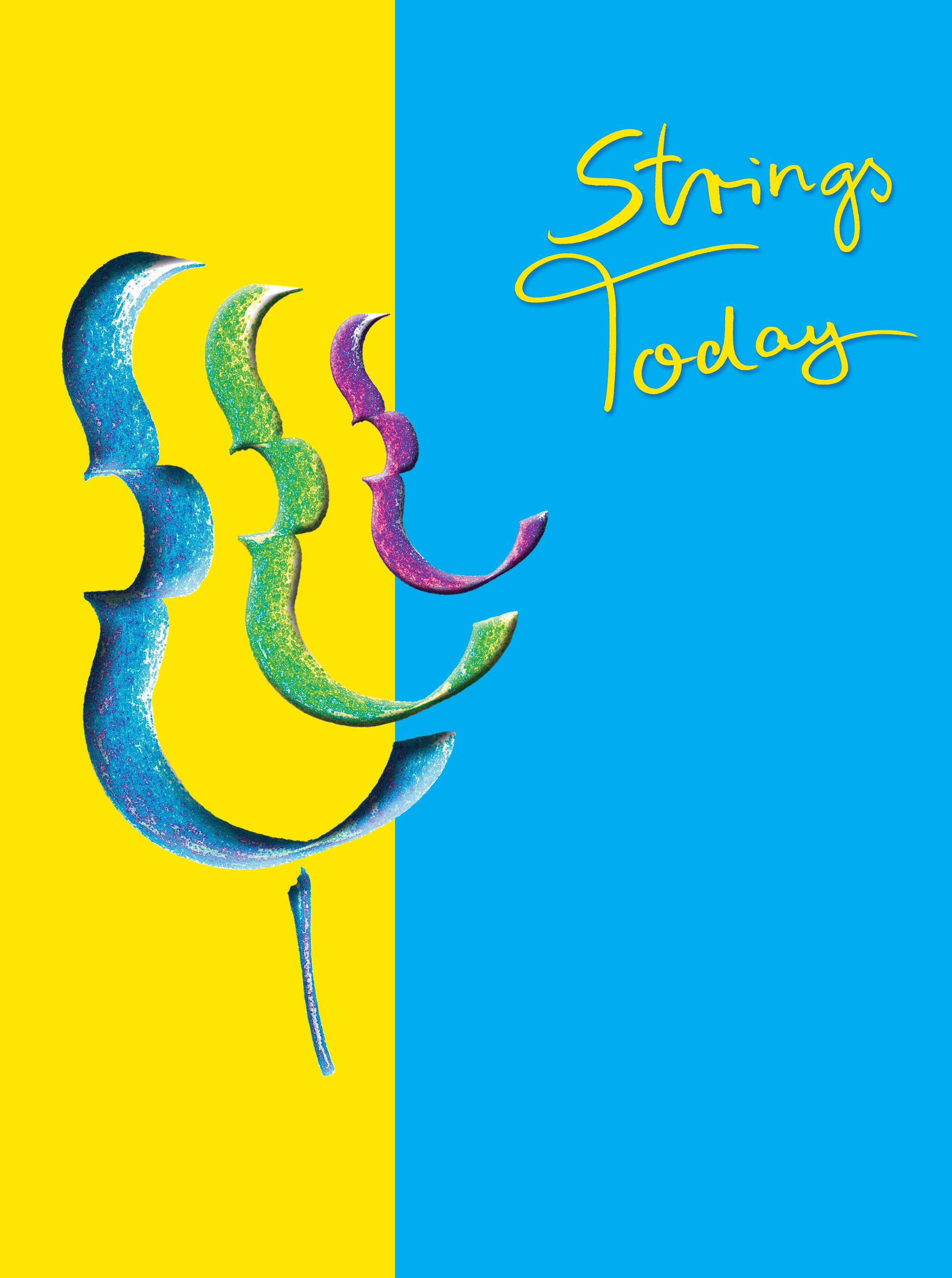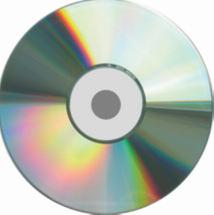
Mar tin Bärenz


Neun peppige Zugaben für junge Streicher
Nine Peppy Encores for Young String Players





Neun peppige Zugaben für junge Streicher

Neun peppige Zugaben für junge Streicher
Nine Peppy Encores for Young String Players
Partitur/Score
Stimmen auf beiliegender CD-ROM/Parts on the enclosed CD-ROM
Kammermusik-Bibliothek 2308
Printed in Germany
Violine I
Violine II
Viola (Violine III)
Violoncello
Kontrabass ad. lib
Violin I
Violin II
Viola (Violin III)
Violoncello
Double Bass ad. lib
Zur Benutzung der CD-ROM
Systemvoraussetzungen: mind. 512 MB RAM
Windows®: ab Windows® XP / Mac®: Power Mac® ab G3, ab OS X® v10.5 / neuere Linux®-Systeme
Browser: Internet Explorer® ab Version 9, Firefox®, Chrome® oder Safari®
Die CD-ROM enthält MP3-Audiodateien, die mit jedem MP3-Player, Audio-CD-Player und PC genutzt werden können, MP4-Videodateien sowie PDF-Dateien. Zum Anzeigen und Ausdrucken der PDF-Dateien ist der Adobe® Reader® oder eine vergleichbare Anwendung erforderlich.
Das Programm startet automatisch nach dem Einlegen. Sollte dies nicht der Fall sein, öffnen Sie das Stammverzeichnis der CD über den Windows Explorer® / Finder und anschließend die Datei „START.HTML“. Falls die Dokumente im Browser nicht korrekt angezeigt werden, öffnen Sie die einzelnen Dateien mit dem Windows Explorer® / Finder.
Adobe® und Reader® sind Marken oder eingetragene Marken von Adobe Systems Incorporated, Windows® und Windows Explorer® der Microsoft® Corporation, Power Mac®, Safari®, OS X® der Apple Inc., Chrome® von Google. Inc., Firefox® von Mozilla.org, Linux® von Linus Torvalds.
For using the CD-ROM
System prerequisites: min. 512 MB RAM
Windows: from Windows® XP / Mac: PowerPC® from G3, from OS X v10.5 / more recent Linux systems Browser: Internet Explorer® from Version 9, Firefox®, Chrome® or Safari®
The CD-ROM contains MP3 audio files, compatible with all MP3 players, audio CD players and computers, MP4 video files, as well as PDF files. To view and print the PDFs you need the Adobe® Reader® or equivalent software.
The program starts automatically after insertion of the CD-ROM. If this is not the case, open the CD-ROM directory using Windows Explorer® / Finder and open the file “START.HTML.” If the documents are not displayed correctly, open the individual files using Windows Explorer® / Finder.
Adobe®, Reader® and Flash® are trademarks or registered trademarks by Adobe Systems Incorporated, Windows® and Windows Explorer® by Microsoft® Corporation, Power Mac®, Safari®, OS X® der Apple Inc., Chrome® by Google. Inc., Firefox® von Mozilla.org, Linux® by Linus Torvalds.
1 Ramba-Zamba-Rumba / Rumbling Rumba5
2 Blues von der 4 in Mathe / Blues of the Poor Grade in Math8
3 Up and Away 11
4 Kommissar Cello / Inspector Cello14
5 Halb acht in der Früh / Seven Thirty in the Morning18
6 Chillen am See / Chilling by the Lake21
7 Heavy Strings
8 Wo bleibt P.? / Where is P.?29
9 Go, Lea, Go!
Bei Strings Today handelt es sich um neun kurze, attraktive Stücke, die man bestens als Zugaben bei einem Konzert einbauen kann. Genauso gut sind sie jedoch als spielfreudige „Etüden“ für Streichorchester geeignet, da sie besonders auf die technischen und musikalischen Belange junger Streicherschüler eingehen – das betrifft z.B. die Wahl geeigneter Tonarten ebenso wie die Verwendung unterschiedlicher Stricharten etc. Gleichzeitig machen die Schüler Erfahrungen im Umgang mit „peppigen“ Rhythmen, „schrägen“ Harmonien und formalen Standards wie „Da Capo“, „Coda“ etc. Der ganze Zyklus ist unterhaltsam und pädagogisch sinnvoll zugleich und ergänzt damit die bestehende Literatur um einen wichtigen Baustein.
Alle Stücke sind streichertechnisch eingerichtet und mit Fingersatzvorschlägen versehen. Die technischen und musikalischen Anforderungen sind gleichmäßig auf alle Stimmen verteilt, so dass auch die Bratschen (wahlweise 3. Violinen) und die Violoncelli immer wieder richtig „prominente“ Aufgaben haben. Auf diese Weise werden sowohl das Zusammenspiel wie auch die Fähigkeit, auf andere Stimmen zu hören, geschult. Die Kontrabassstimme (ad. lib.) ist so leicht gehalten, dass junge Bassfans relativ früh „mit einsteigen“ können. Nach 3–4 Jahren Unterricht sind die Stücke im Allgemeinen in allen Stimmen locker zu bewältigen.
Als Leiter des Streicherkammerorchesters an der Musikschule Mannheim musste ich dem Bedarf an zeitgemäßer Literatur für junge Streicher stets mit entsprechendem „Futter“ begegnen, und so entstanden im Laufe der Zeit zahlreiche Kompositionen, unter anderem die „maßgeschneiderten“ Stücke von Strings Today. Ich danke den Mitgliedern des Kammerorchesters für den Ansporn, diese Sammlung zu schreiben und für die Begeisterung, mit der sie die Stücke einstudierten und aufführten. Ebenso danke ich herzlich meinem Kollegen Achim Ringle für die Fingersatzbezeichnung der hohen Streicherstimmen.
Martin Bärenz
Strings Today is a book with nine short, catchy pieces that are perfectly suited as concert encores. They serve just as well as joyful “etudes” for string orchestras, as they particularly meet the technical and musical needs of young string students – this applies to, for example, the choice of suitable modes as well as to using different bowing techniques, etc. At the same time, students gain experience in dealing with “peppy” rhythms, “odd” harmonies and formal standards such as “da capo”, “coda”, etc. The whole cycle is enjoyable, yet pedagogically sensible, and adds an important component to the existing literature.
In all pieces bowings are provided and fingerings suggested. Technical and musical requirements have been evenly distributed to all parts, so that also the violas (optionally 3rd violins) and violoncellos get to play really “prominent” parts. Thus, both ensemble playing and the ability to listen to other parts are trained. The double bass part (ad. lib.) is easy enough for young bass fans to join in relatively early. Altogether, all parts from all pieces ought to be easily mastered after 3-4 years of lessons.
As director of the string chamber orchestra at the Musikschule Mannheim, I always had to meet the young string players’ needs for modern literature with adequate “food”; that is how many compositions have emerged in the course of time, e.g. the “tailored” pieces of Strings Today. My thanks go to the members of the chamber orchestra for their incentive to write this collection and their enthusiasm in rehearsing and performing the pieces. A cordial thank you goes also to my colleague Achim Ringle for carrying out the fingering of the high string parts.
Martin Bärenz
Martin Bärenz
This is an excerpt. Not all pages are displayed. Have we sparked your interest? We gladly accept orders via music and book stores or through our webshop at www.breitkopf.com. Dies ist eine Leseprobe.
Nicht alle Seiten werden angezeigt. Haben wir Ihr Interesse geweckt?
Bestellungen nehmen wir gern über den Musikalien- und Buchhandel oder unseren Webshop unter www.breitkopf.com entgegen.
Natürlich sollen die „jungen Streicher“ nicht war ten, bis sie um Zugaben gebeten werden Die kurzen „Strings Today“-Stücke lassen sich einfach so spielen – einzeln oder als Suite Die „peppigen Zugaben“ sind in allen Stimmen gleichermaßen leicht spielbar, und dennoch darf sich jedes Instrument auch profilieren. So sind bei „Heavy Strings“ Cello und Bass gefragt, die Bratsche spielt das Solo in „Wo ist P. ? “ usw. Insgesamt hat Bärenz die Besetzungen mit Blick auf die Praxis angelegt: der Kontrabass ist ad libitum, die Bratsche kann durch Violine III ersetzt werden – und die Stimmen befinden sich zum Ausdrucken „variabel“ auf der CD-ROM. Alle Stücke sind streicher technisch eingerichtet Jedes junge Streicherensemble kann mit „Strings Today“ viel Freude haben
Mar tin Bärenz (* 1956), Violoncellounterricht ab dem 9 Lebensjahr ; bereits als Schüler erste Kompositionen und Bearbeitungen 1978–1983 Cellostudium an der Musikhochschule Mannheim; 1982 erster Kompositionsauftrag der Städtischen Bühnen Heidelberg Seit 1980 Tätigkeit als Studio- und Tourneemusiker sowie Arrangeur, vor allem in den Bereichen Chanson und Jazz; Konzer treisen weltweit; Radio-, TV- und CDProduktionen. Seit 1984 Cellolehrer an den Musikschulen Heidelberg und Mannheim, Dozent an der Pädagogischen Hochschule Heidelberg.
Informationen zum Autor siehe auch www.breitkopf.de

It is obvious that “ young string players ” shouldn’t have to wait until requested to play encores The little “Strings Today” pieces can be played just for fun, singly or as a suite The “ peppy encores ” can be easily played in all par ts to the same degree , yet each instrument can also shine on its own: “Heavy Strings” calls for the cello and bass, the viola plays the solo in “Where is P. ? ” etc . Altogether, Bärenz has laid down the settings with a view to performance practice: the double bass is ad libitum, the viola can be replaced by Violin III, and the par ts are on the CD-ROM ready to be printed out “variably.” All pieces have been marked up with a view to string technique . “Strings Today” ensures lots of rewarding music-making for young ensembles.
Mar tin Bärenz (b 1956) had his first violoncello lessons at the age of 8 and star ted composing and arranging while he was still a school boy From 1978–1983 he studied cello at the Musikhochschule Mannheim In 1982 he received his first commission by the Städtische Bühnen Heidelberg As of 1980 activities as a studio and tour musician and arranger par ticularly in the fields of chanson and jazz music He went on worlwide concer t tours; radio, TV and CD productions Since 1984, he has worked as a cello teacher at the music schools Heidelberg and Mannheim and is appointed lecturer at the Pädagogische Hochschule Heidelberg.
Fur ther information on the author see www.breitkopf.com

